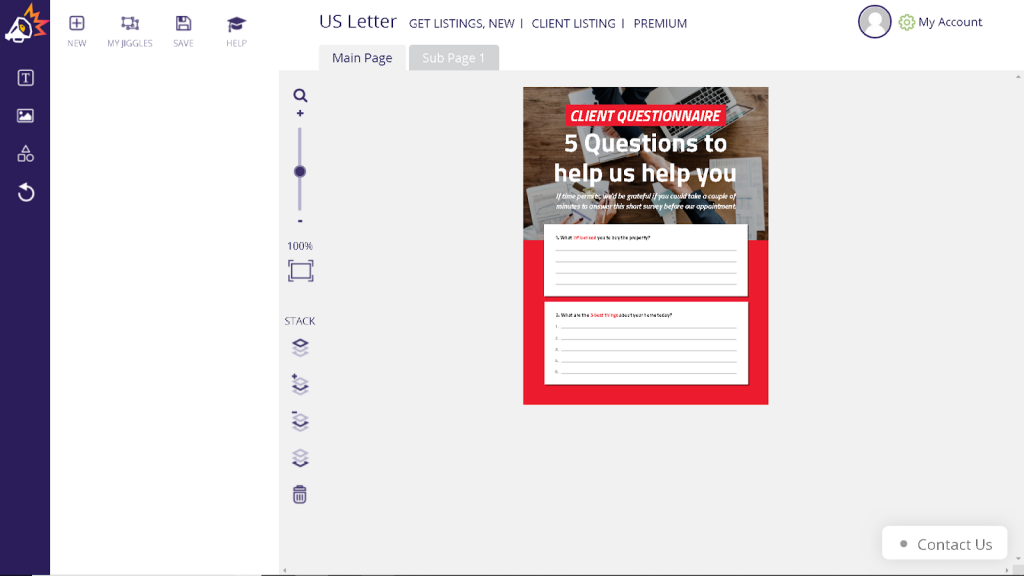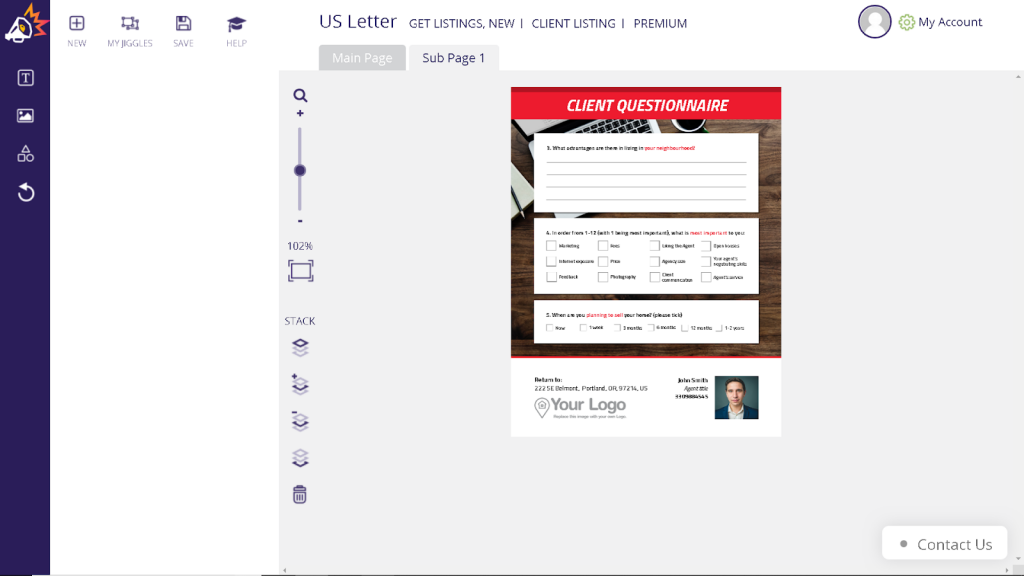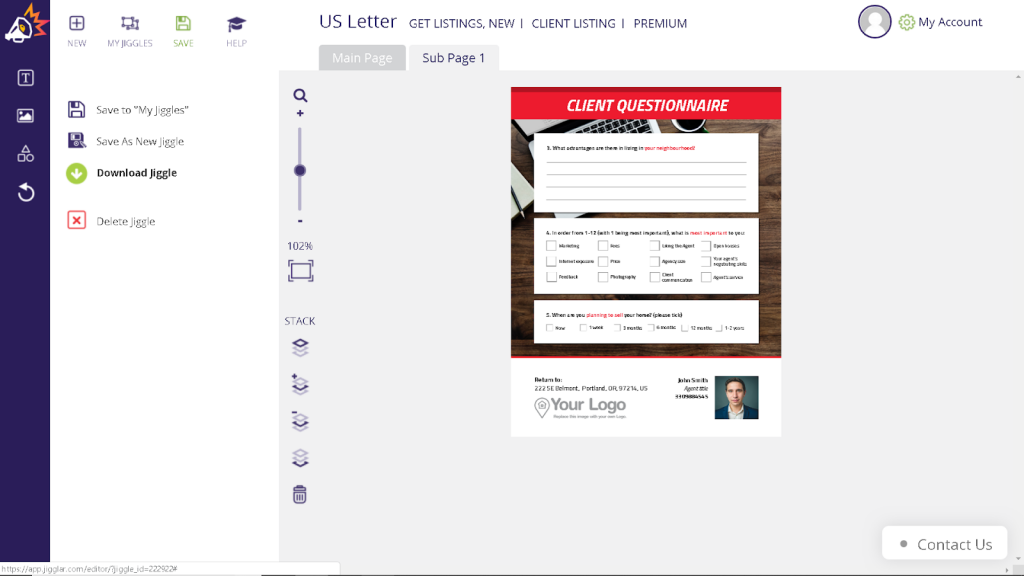We live in the information age. Any data that you can gather to improve your real estate sales process will give you a serious leg up on the competition. One effective and straightforward way to collect information is to use a real estate questionnaire for buyers. In this guide, we will examine why these questionnaires are necessary, and highlight some hassle-free ways that you can create them on your own, without the help of a graphics designer or a marketing team.
The Value of Using a Real Estate Questionnaire
When you are prospecting without the aid of a customer database, you are essentially flying blind. Sure, you could spend hours of your time reaching out to each lead without the relevant information, but doing so would not benefit your bottom line. Not to mention how boring, and inefficient randomly calling up leads can be. Using a real estate questionnaire to categorize and sort leads by characteristics can dramatically reduce the time you spend with busy work. Using a lead sheet to collect information from potential buyers and sellers is a no-brainer.
Data is the lifeblood of any successful modern business. You can bet that your competition is collecting this information, and as time goes on agents that fail to take advantage of data collection and management will be at a serious competitive disadvantage. Do not be left behind and take the time to create an effective real estate buyer questionnaire.
How to Optimize Your Real Estate Buyer Questionnaire
Now that you know what not to do, we will show you a few ways to improve your real estate buyer question form. These improvements will lead to more efficient data collection and deployment- to ensure that you don’t leave any deals on the table.
Introduce Yourself!
More than most industries, real estate sales rely on trust. Potential buyers have to trust that you are honest in your dealings and that you know what you are talking about when it comes to the property. At the top of your buyer form you should create a space that helps potential buyers understand who they are dealing with, and more importantly, who is collecting their personal information.
Place Your Questionnaire in a High-Traffic Area
At every open house you should have a central table or area where you keep marketing materials, sign in lists, and other relevant information for potential buyers or future clients. This is also where you should keep your real estate questionnaires. If you have snacks or beverages set up at your open house you can place the questionnaire nearby to ensure people notice it.
Make it Easy for the Prospect to Share Their Information
The more obstacles and roadblocks are in the way, the less information potential leads will be willing to share with you. Keep your buyer forms in an area that jumps out at the prospect, and ask them to fill out their information as soon as they walk in the door. If you ask them when they are on the way out many people will choose to avoid filling out the information.
Ensure you get as much client data as possible by politely, and firmly asking them to fill out the buyer form as soon as they walk in. Most people do not fill out many forms these days without the aid of a smartphone, so everything that you do to make that task easier will increase the amount and quality of data that you collect from your prospects.
Ask the Right Questions
In the era of smartphones and tablets, keeping someone’s attention is harder than ever. Most prospects will view your buyer questionnaire as an annoyance at best. While getting as much information as possible is the goal, sometimes you get more information by making the process easier. Stick to essential metrics that people care about, like lot/house size, front and backyard information and price range. Use that info to make an initial connection and fill out the rest later.
Don’t Make The Form Too Long
Many people believe that more is always better. However, when it comes to getting accurate information without imposing an undue burden on potential clients, it is crucial that you not ask too many questions. The prospect should not feel like they are filling out a loan application- keep it simple and to the point. Grabbing someone’s buying preferences, buying window, and basic contact information like email, phone number, etc. should suffice. Sometimes less is more, and that is particularly true when requesting information from prospects.
How to Create a Client Questionnaire Using a Jigglar Template
Building your own client questionnaire is not exactly a walk in the park. To create quality marketing materials, you need to have an understanding of photoshop software, copywriting skills, and the ability to organize and design a template. However, instead of spending all that time and effort, you can utilize Jigglar’s template solution to create an industry-standard template in just minutes.
Here is a quick set of instructions to help you build your own client questionnaire using Jigglar in just a few minutes.
Your first step should be to click this link to open the Jigglar dashboard. You’ll find the client questionnaire under the Just Listed category, search for “question”.
This will bring you to the “Main Page” as shown below.

This template has two pages, a main page(shown above) and a subpage, shown below.

On the second page you can fill in your information and picture or company logo on the bottom of the form by clicking on the boxes and adding text/images.
Once you are done, move your cursor to the left side of the screen click “Save” followed by “Download Jiggle”

Once you click this button you will be given the option to download your client questionnaire in JPEG, PDF, or Commercial quality PDF.

Choose which one to download and the files will go directly to the folder of your choice. And that it is it! A few minutes of work to create a professional, quality real estate questionnaire for buyers with Jigglar.
Need a Jigglar account? It’s free to claim your account, just head here to log in to the app.




